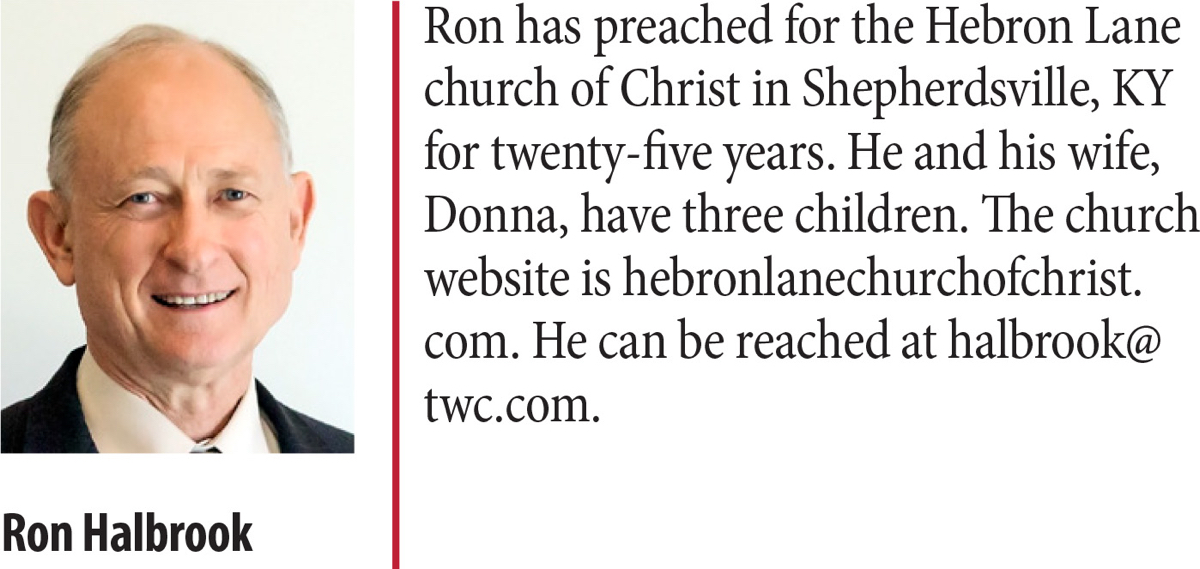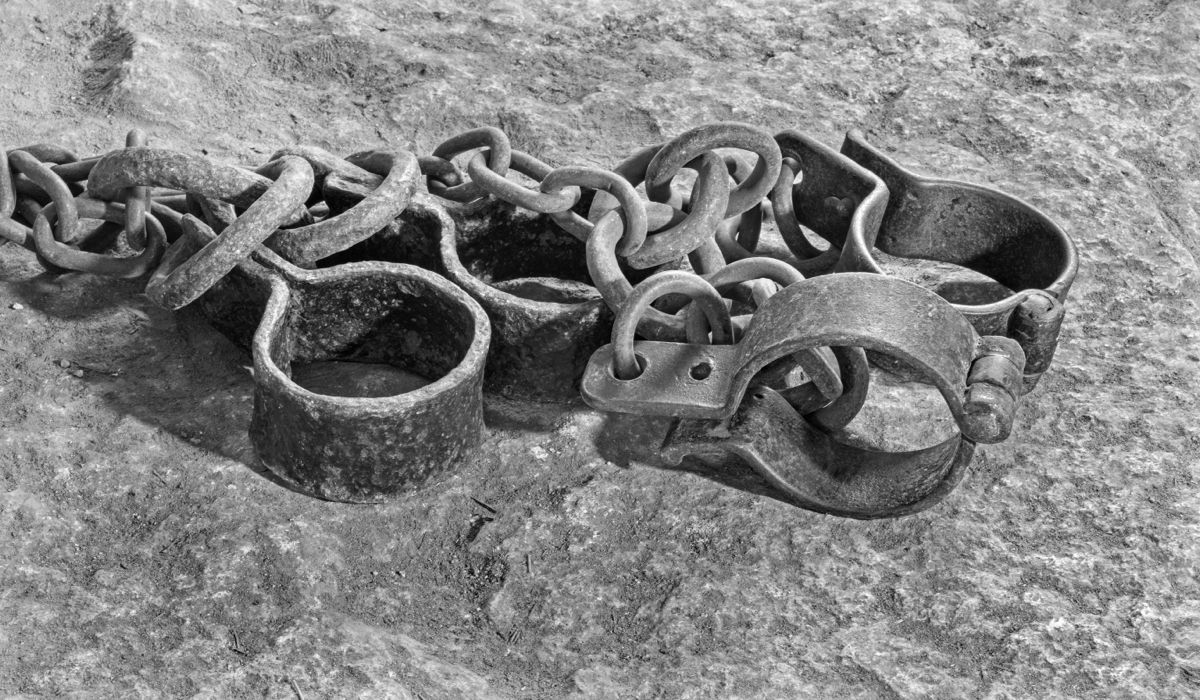By Ron Halbrook
Synopsis: Eternal truth is communicated in Scripture in a variety of linguistic styles, sometimes literally, sometimes figuratively. Paul’s allegory taken from the life of Abraham reminds us of several profoundly important concepts.
When the gospel of Christ was revealed in the first century AD, many Jews rejected it outright and many others who accepted it tried to make it simply an extension of the Law of Moses. They required Gentiles to become proselytes to the Jewish religion as a prerequisite to becoming a Christian. Since they were obsessed with maintaining the old Jewish system, Paul introduced an allegory of the two covenants taken from Jewish history by asking, “Tell me, ye that desire to be under the law, do ye not hear the law?” An allegory uses actual events from history or human experience to illustrate a lesson. Galatians 4:21-31 illustrates vital differences between the Law of Moses and the Gospel of Christ.
The key point of the allegory is the difference between being a slave and being free. Hagar and Ismael illustrate the state of slavery, whereas Sarah and Isaac illustrate the state of freedom as the allegory is presented in Galatians 4:21-31.
Tell me, ye that desire to be under the law, do ye not hear the law? For it is written, that Abraham had two sons, the one by a bondmaid, the other by a freewoman. But he who was of the bondwoman was born after the flesh; but he of the freewoman was by promise. Which things are an allegory: for these are the two covenants; the one from the mount Sinai, which gendereth to bondage, which is Agar. For this Agar is mount Sinai in Arabia, and answereth to Jerusalem which now is, and is in bondage with her children. But Jerusalem which is above is free, which is the mother of us all. For it is written, Rejoice, thou barren that bearest not; break forth and cry, thou that travailest not: for the desolate hath many more children than she which hath an husband. Now we, brethren, as Isaac was, are the children of promise. But as then he that was born after the flesh persecuted him that was born after the Spirit, even so it is now. Nevertheless what saith the Scripture? Cast out the bondwoman and her son: for the son of the bondwoman shall not be heir with the son of the freewoman. So then, brethren, we are not children of the bondwoman, but of the free.
Since Ishmael was born from a slave named Hagar, he was also a slave. The Law of Moses is like Hagar the slave and the followers of the Law are also slaves. They are slaves to sin because the Law of Moses had only animal sacrifices which cannot take away our sins. Sarah was a free woman and therefore her child was born free. The gospel produces followers who are free from sin—we have a perfect sacrifice in Christ to take away all of our sins.
Ishmael was born when Abraham made a plan, not by God’s plan. People trying to be saved in the Gospel Age by following the Law of Moses are also following a human plan, not God’s plan. When man substitutes his plan for God’s plan, it always fails.
Ishmael persecuted Isaac. Christians were persecuted by the Judaizing teachers who were binding the Law of Moses. Even today, such teachers vigorously and adamantly oppose Christians who follow Christ alone without the terms and conditions of the Old Testament.
Ishmael was cast out of Abraham’s home and did not receive the inheritance. Isaac was the heir of God’s promise to send a Savior, and Christians are the heirs of eternal life through the Savior.
| SLAVES | FREE |
|---|---|
| 1. Hagar: Law of Moses, Old Jerusalem | 1. Sarah: Gospel of Christ, New Jerusalem |
| 2. Ishmael: Followers of Law, Bondage to Sin | 2. Isaac: Followers of Christ, Forgiven of Sin |
| 3. Born of Human Wisdom | 3. Born of Divine Promise |
| 4. Persecuted Free Son | 4. Persecuted by Slave |
| 5. Cast Out | 5. Heir of God’s Blessings |
A myriad of religious concepts and practices today reflect man’s failure to differentiate the two covenants. Let us consider just a few.
The Jewish religion wants to rebuild the temple in Jerusalem to offer animal sacrifices, as provided in the book of Leviticus. Proclaimers of premillennialism assert the temple must be rebuilt in Jerusalem with all of its rituals, ceremonies, and sacrifices. Such events and practices would be a mockery of the perfect sacrifice of Christ expounded in the book of Hebrews:
But this man, after He had offered one sacrifice for sins for ever, sat down on the right hand of God; From henceforth expecting till His enemies be made His footstool. For by one offering He hath perfected for ever them that are sanctified (Heb. 10:12-14).
Observant Jews and many religious bodies attempt to follow the dietary laws found in such passages as Leviticus 11 and Deuteronomy 14 (Jews refer to “kosher” food, meaning fit or proper). Yet, Colossians 2:14-17 explicitly affirms such laws were nullified by Christ’s death on the cross. Jews, Seventh Day Adventists, the Worldwide Church of God and its offshoots, Catholics, and many Protestant churches conduct observances of the feast days outlined in Leviticus 23 such as the Passover, Pentecost, Tabernacles, and Trumpets—likewise terminated according to Colossians 2.
Catholic churches, Episcopal churches, and many other churches try to perpetuate or echo the instructions in passages such as Numbers 3 by ordaining a special priesthood, whereas all Christians constitute the priesthood of the New Covenant (1 Pet. 2:5). These same bodies prepare special robes for their priests reflecting Old Testament instructions, but we are clothed in Christ according to the New Testament (Exod. 28; Rom. 13:14; Gal. 3:27).
Another example of confusion includes the practice of polygamy by some Mormons and other cults based on passages such as Exodus 21:10, whereas Christ teaches that the sacred bonds of marriage are reserved for one man united to one woman (Matt. 19:3-9; 1 Cor. 7:1-5).
Jews inherited their citizenship in Israel by birth and males were circumcised on the eighth day, and people embracing Judaism today follow this same concept (Gen. 17:9-14; Josh. 5:2-5). Catholics, Episcopalians, Lutherans, Presbyterians, Methodists, and other groups appeal to this history in arguing for infant baptism and infant membership in the church today. Yet, the New Testament clearly teaches that when people capable of believing in Christ and repenting of their sins are baptized, God spiritually circumcises them by casting away their sins (Mark 16:16; Acts 2:38; Col. 2:11-13). Infants are not sinners and have no sins for God to cut away and cast away.
Many religious bodies appeal to the Old Testament as justification for such practices as burning incense and using instrumental music in worship (Exod. 30:1-10; 2 Chron. 29:25). Tithing is widely legislated based on God’s instruction to the Jews to give ten percent of all fruits and flocks (Lev. 27:30-33; Deut. 14:22-29). Likewise, Jews, Seventh Day Adventists, the Worldwide Church of God and its offshoots, and other Protestant denominations attempt to observe the Sabbath Day in some way based on Exodus 20:8 (some claim Sunday is “the Christian Sabbath”).
Christ came to teach the new and true way of worship and the Father said, “This is my beloved Son, in whom I am well pleased; hear ye Him” (John 4:23-24; Matt. 17:5). He taught none of these practices and we must submit to Him in “all things” that He commanded (Matt. 28:18-20).
People attempting to serve God under the terms and conditions of the Old Testament Law will find they are, like Ishmael—cast out from the inheritance promised by God. Only by following Jesus Christ can we become heirs of all the spiritual blessings prepared and promised by God, as the allegory of the two covenants makes crystal clear in Galatians 4.


